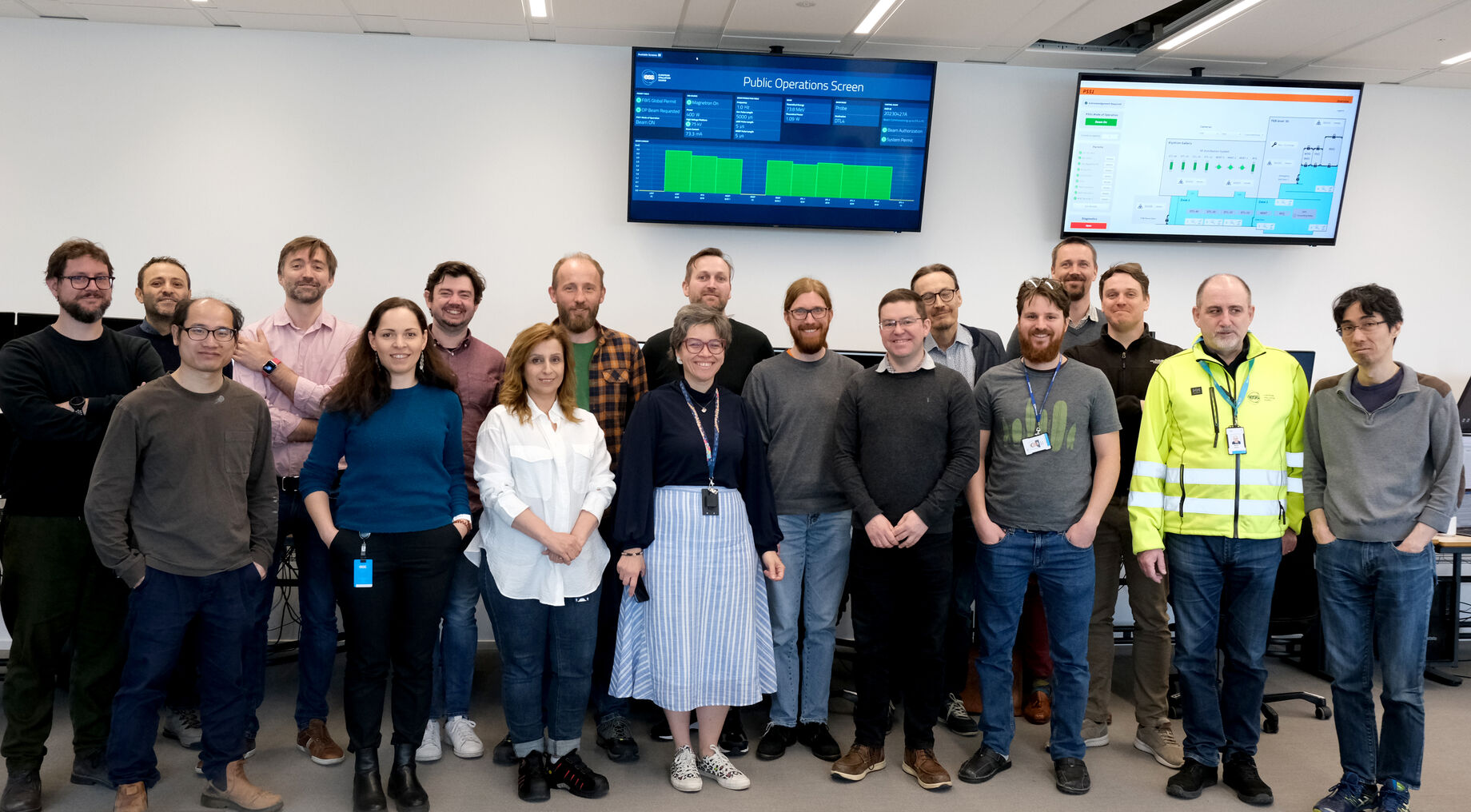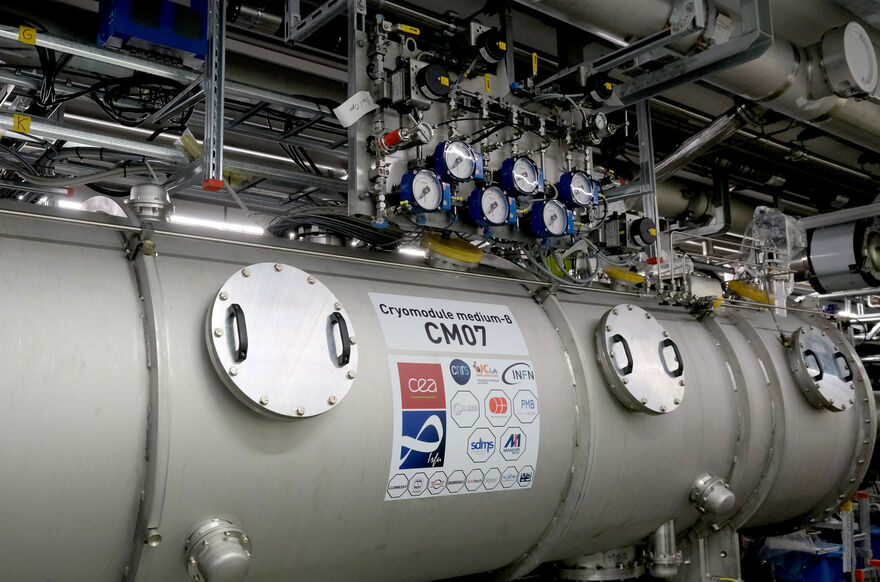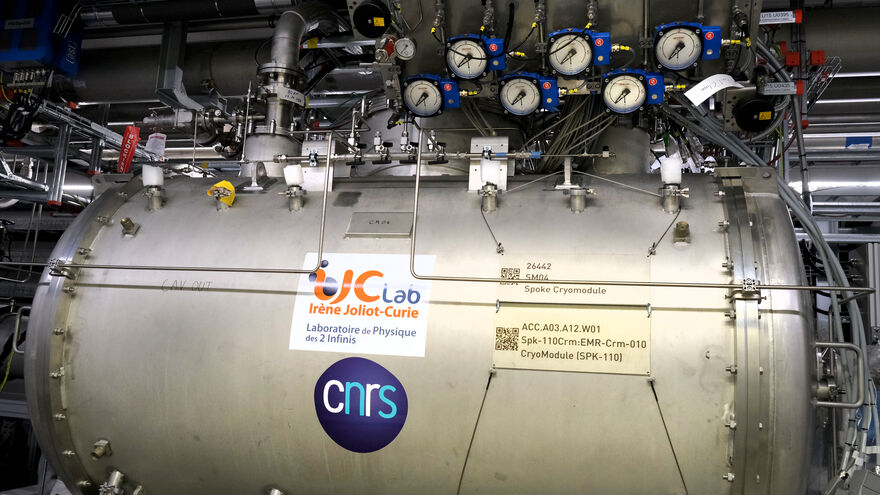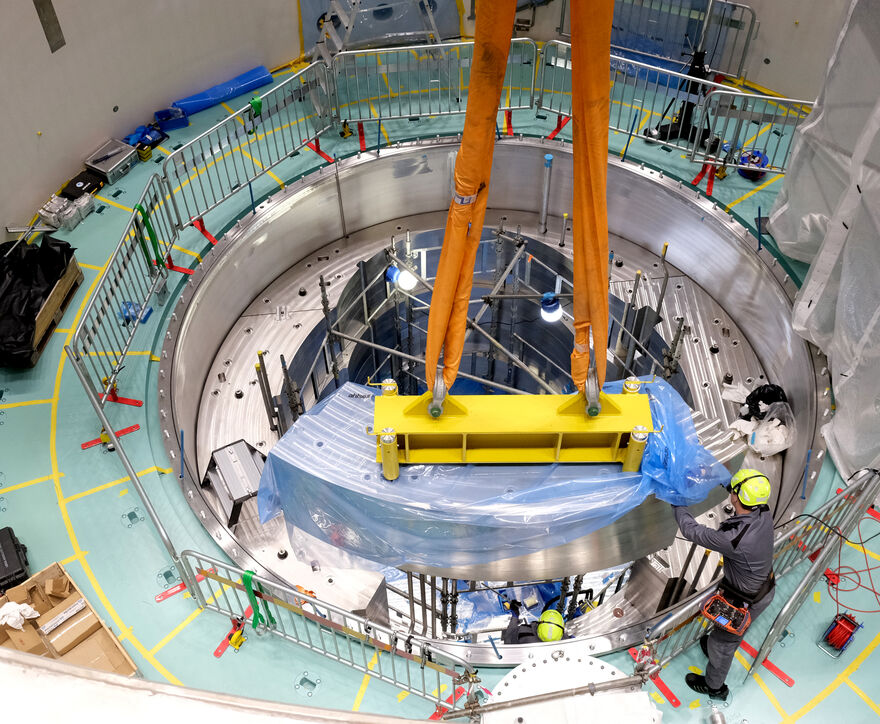
The construction of the ESS facility progresses steadily, advancing towards Beam on Target (currently foreseen for mid-2025), First Science and Start of User Programme (2026) and end of construction project (end of 2027) and transition to steady-state operations (2028).
Start of DTL4 beam commissioning
In the past weeks, the ESS staff and in-kind partners have celebrated the achievement of a significant milestone: in the afternoon of 20 April, the first probe beam was sent from the ion source to Drift Tube Linac 4 (see layout below), marking the start of this new phase of beam commissioning of accelerator components.
This is another milestone on ESS Road to Science achieved thanks to a truly international and multi-disciplinary collaboration involving scientists, engineers and technicians at ESS in-kind partner institutes (INFN, CEA, ESS Bilbao, Bergen Uni, WUT) and the ESS teams involved (Accelerator, Beam Physics, Diagnostics, Controls, Operations and many more).
As planned, commissioning will continue until mid-July, and will be followed by the installation of DTL5.
In parallel to the beam commissioning activities, the installation of new components in the linear accelerator continues: the pilot installation of one spoke and one medium beta cryomodule started in March 2023.
The two modules are now aligned in place in their designated space in the superconducting part of the Linac.
The above mentioned are only some of the many goals achieved in the last months in all areas of the facility, including the target station, neutron instruments and control systems.
For more highlights from the construction site, please check our progress reports from the ESS site.
Strengthening Project Delivery
In the mid of 2022, the execution of the ESS project was challenged by key equipment and system integration difficulties.
In response, ESS has been mobilising resources and strengthening ways of working to secure robust project management and adequate technical intervention capacity, both at ESS and with in-kind partners.
As a result, during the last six months, ESS has been holding the dates of the major milestones, while continuing to monitor and put effort into emerging challenges.
Recovery plans for the challenges with the helium circulator – a key component of the cooling system for the target wheel –have been put in place and are constantly monitored.
Regarding the license to operate, an emerging issue is connected to the Swedish model for the management of radioactive waste.
The ESS management has been actively engaging with Swedish waste management companies, authorities and government representatives to secure that the disposal of ESS radioactive waste continues to be integrated in the ‘Swedish Model’ for radioactive waste management.
Organisational Transformation to Enable Science
As the construction of the facility continues according to plan, great effort continues to be put by all sectors of the organisation to continue to progress on our Road to Science and start operations in 2028.
The new organisational structure presented last autumn has been successfully rolled out as of January. The establishment of a directorate for Operations and Infrastructure has been contributing to accelerate the path towards steady state operations by centralising all resources required for managing present and future operations on the ESS site.
The ESS Science Programme continues to be developed, involving many activities, both in-house and in collaboration with other research and academic institutions worldwide. Among other initiatives, the establishment of groups dedicated to Chemistry and Life Science Support and to Materials and Physics Support sets the organisation for effective scientific operations and support.





























